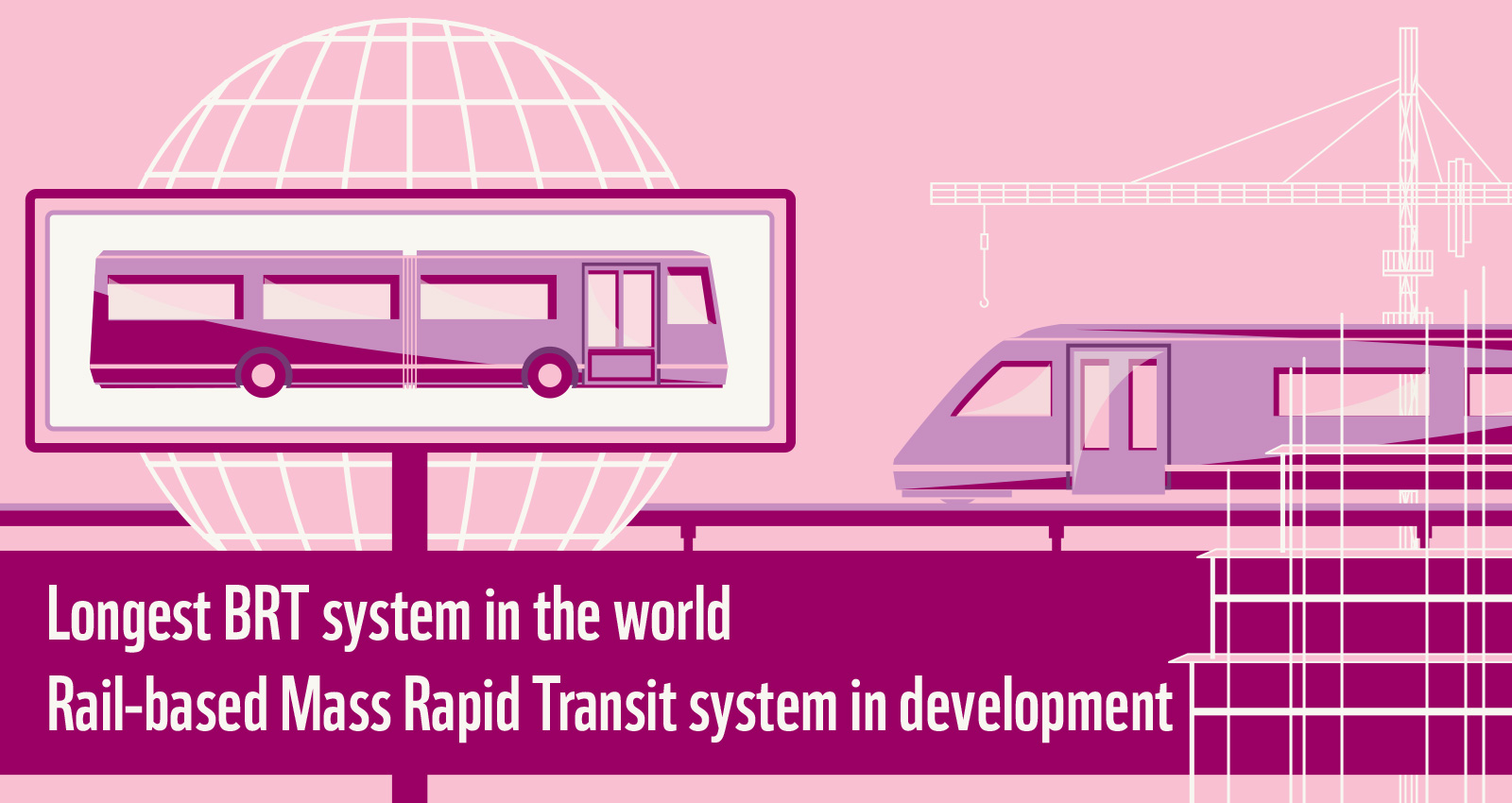The WWF is run at a local level by the following offices...
- WWF Global
- Adria
- Argentina
- Armenia
- AsiaPacific
- Australia
- Austria
- Azerbaijan
- Belgium
- Bhutan
- Bolivia
- Borneo
- Brazil
- Bulgaria
- Cambodia
- Cameroon
- Canada
- Caucasus
- Central African Republic
- Central America
- Central Asia
- Chile
- China
- Colombia
- Croatia
- Democratic Republic of the Congo
- Denmark
- Ecuador
- European Policy Office
- Finland
JAKARTA

Backbone of Jakarta´s public transport
When constructed in cooperation with the NGO Institute for Transportation and Development Policy (ITDP) in 2003, Transjakarta represented a breakthrough. It was Asia´s first true BRT with features such as physically separated bus-only lanes, raised platforms and ticket control before boarding, a system developed by the Brazilian city Curitiba in the 1970s and popularized by Colombia´s capital Bogotá around the turn of the millennium. Transjakarta has since been expanded to 12 lines with 134 km of dedicated bus lanes amounting to around 184 km altogether, with 210 stations, making it the most extensive BRT system in the world. It operates around 800 buses that carry more than 300 000 passengers daily and has become the backbone of public transportation in Jakarta. Travel times were initially reduced by as much as an hour during peak periods and over 25% of passengers have switched from using private motorized vehicles. The city subsidizes Transjakarta with a third of its costs, and ticket prices have remained unchanged for 10 years.
But a better public transport system overall is badly needed in Jakarta, which has several times been named the most congested city, as well as one with the most air-pollution in the world, costing the city about $3 billion per year. These problems have continued to worsen despite the investments in Transjakarta. One reason is the fast expansion of the city with annual growth rates of 5-10%. With more than 10 million residents, Jakarta is also the center of a megacity called Jabodetabek with a total population of over 30 million people, according to official estimates. And while private car ownership increases by 10% on a yearly basis, there is no equivalent in road development.

 © City of Jakarta
© City of JakartaChallenges and changes in developing BRT
The other reason for these problems is insufficient investments in public transport, including in Transjakarta, which hasn´t achieved its true potential. The system reached a peak in passenger transport of around 350,000 per day in 2011 and has since declined, despite the opening of a new corridor. In fact the 2011 figure was far below the system’s target when it was first built. As a comparison, Bogotá´s TransMilenio transports more than 1.6 million passengers per day with only around 100 km of corridors, and Guangzhou´s system transports around 800 000 passengers daily in one single corridor.
One explanation for Transjakarta’s comparatively modest performance is that the system focused more on developing corridors rather than on quality and an adequate expansion of the fleet, resulting in crowded buses and too long waiting times. Another is poor integration with feeder bus lines in the periphery. This situation has been exacerbated by insufficient maintenance and a failure to keep the dedicated bus lanes free of other traffic.
The good news is that Jakarta´s new city administration, led by the governor Basuki “Ahok” Tjahaja Purnama, has made improvements of Transjakarta a priority, including purchases of new high quality buses, and has already started to deliver on his promises. In 2014, Transjakarta also changed from a government agency to a city-owned enterprise, which according to ITDP will likely improve its service. Jakarta has also invested in improvements and new buses for the feeder bus lines. In 2015, the new directors of Transjakarta promised adding 500 to 1,000 buses in the near future as well as improving the system’s integration with the state owned railway. Ahok has threatened to replace them if they don´t deliver.
Jakarta is also investing in a railway based Mass Rapid Transit (MRT) system with two lines, partly underground, and has plans for a light rail transit system as a feeder to the MRT. But even when this is built, Transjakarta will remain the city´s main mode of public transport because of its wider coverage. If the system achieves its true potential, it could at least quadruple its number of passengers to 1,200,000 per day, according to ITDP Indonesia.
A broad sustainability agenda
Jakarta is also known for its car-free days every Sunday morning, and several other initiatives to green its transports. With its relatively aggressive goal of a 30% reduction of GHG emissions by 2030, Jakarta has to act urgently on transport, which accounts for almost half the city´s emissions. Other projects to reduce emissions include a green building development plan, solar projects and waste to energy projects. The other significant challenge for Jakarta is resilience against climate change, as it will be one of the first major cities in the world to be affected, and its flooding problems have led to the $40 billion Great Garuda project to build a taller sea wall.
Want to know more about Urban solutions?
Contact Barbara Evaeus
Global Communications Manager,
WWF One Planet City Challenge
+46 70 393 9030
barbara.evaeus@wwf.se
Text by: Martin Jacobson
Last edited: 2017-03-15


